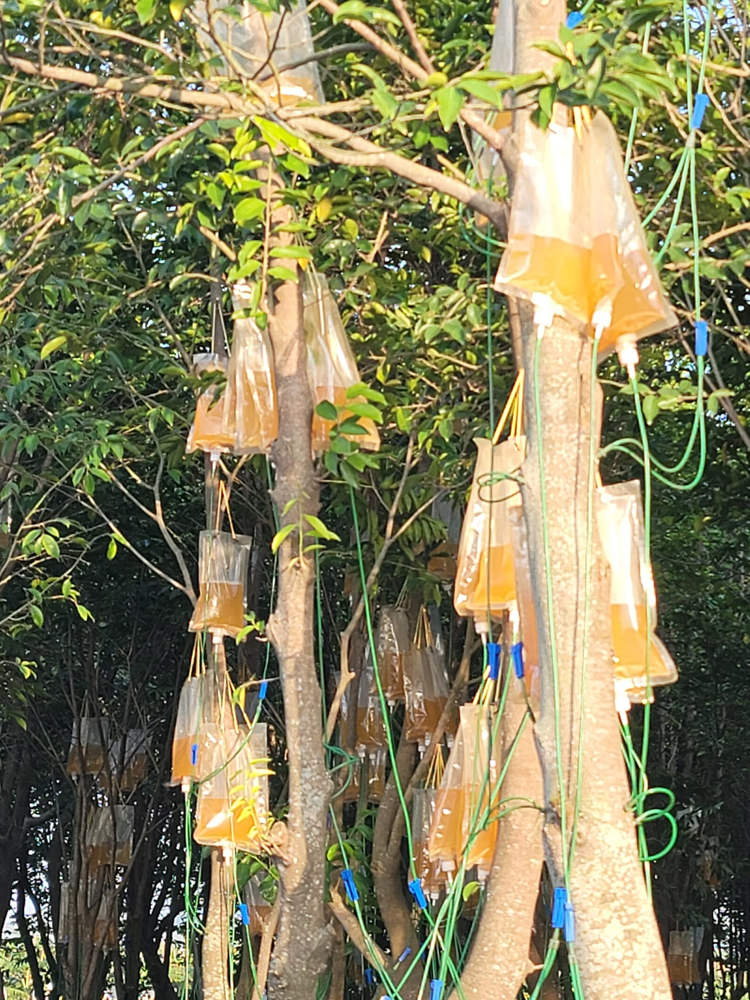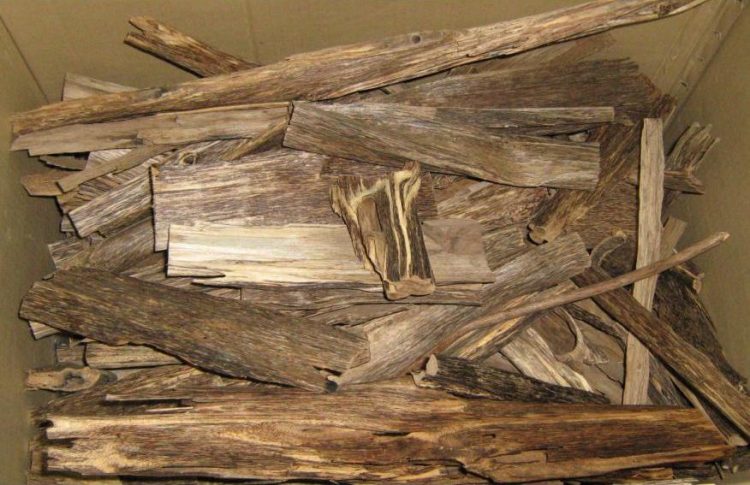IV therapy is usually associated with curing illnesses, but when it comes to creating the world’s most expensive wood, IV drips are a means of delivering poison.
About a week ago, a couple of photos showing large IV drips filled with a dubious-looking liquid hanging from trees went viral on Chinese social media, prompting all kinds of reactions from people. Some wondered if it was an art installation designed to raise awareness about the rampant deforestation taking place on a global scale, or about the human-made pollution killing plant life, while others were convinced that it was a genuine treatment method designed to save the trees from fungi or other parasites. There were even those who said it was vandalism, that the bags were filled with human urine. All of these theories turned out to be wrong.








